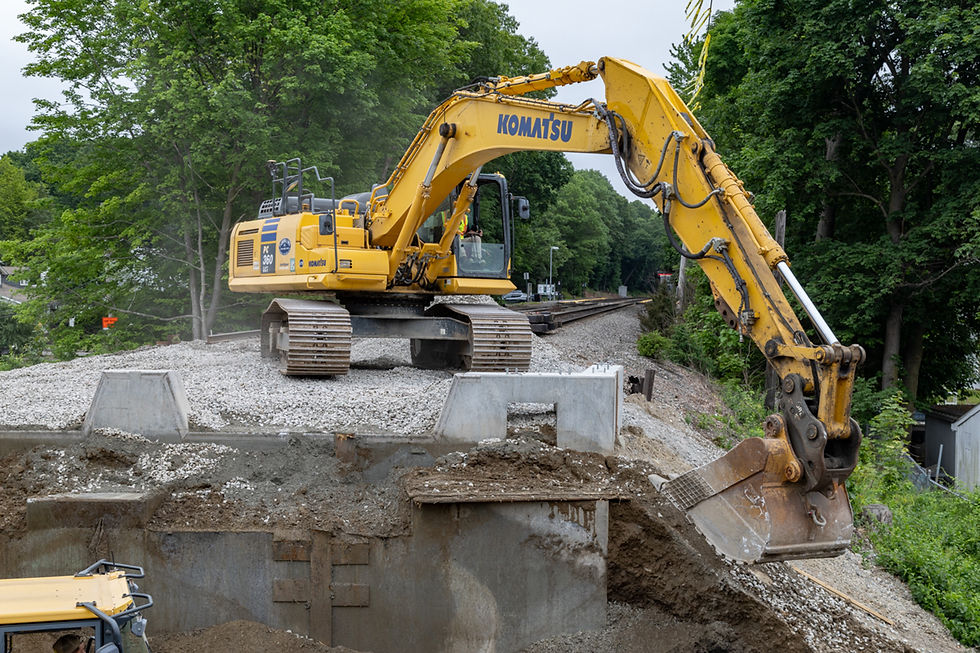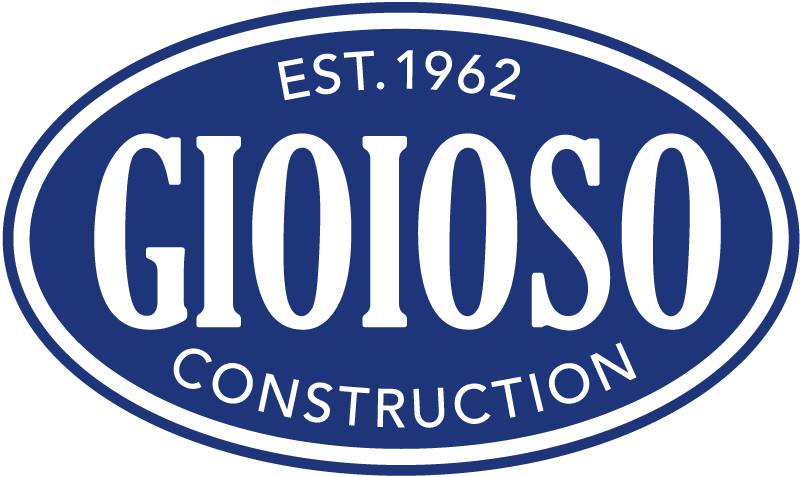
Commuter Rail Bridge Replacement


P. Gioioso & Sons
50 Sprague Street, Hyde Park, MA 02136
Phone: 617-364-5800 Fax: 617-364-9462
© 2024 P. Gioioso & Sons, Inc.
Website design by








Accelerated Bridge Construction with SPMT Installation
Dedham, MA
Project Highlights
P. Gioioso competed against several local contractors to win the bid for the reconstruction of a railroad bridge over East Street in Dedham, MA. The bridge carries two tracks of commuter rail traffic on the MBTA Franklin commuter rail line. The existing bridge was built in 1904 and the clearance between the stone abutments was barely 22 feet without sidewalks. The bridge had been a victim of multiple vehicle strikes each year due to its height of just over 12 feet. The new bridge will have a clearance of over 13 feet 6 inches and will have sidewalks along both sides of the roadway.
P. Gioioso prepared for the new bridge by installing precast concrete abutments behind the existing stone abutments over three days on a weekend, to limit the disruption of the commuter rail traffic. This preparatory work required the removal of the tracks and the old bridge, the excavation of material behind the existing abutments, and the placement of precast concrete abutment sections. The abutments were then buried below the track bed and the rails were re-installed for train service to resume on Monday morning. The new steel bridge was assembled on a raised platform on site, in an area adjacent to the existing bridge. A two-day, 24 hour per day weekend was used to remove the tracks, demolish the old bridge and abutments, and prepare the new abutments to receive the new bridge. Gioioso utilized a Self-Propelled Modular Transporter (SPMT) from Bay Crane to carry the new 250,000-pound bridge from its assembly area onto East Street, lowering it into place atop the new abutments. Proper placement was critical as there was only a few inches of clearance on either side of the bridge.
The project also required the relocation of all utilities under East Street, including natural gas, water, electric, telecommunications and stormwater.
